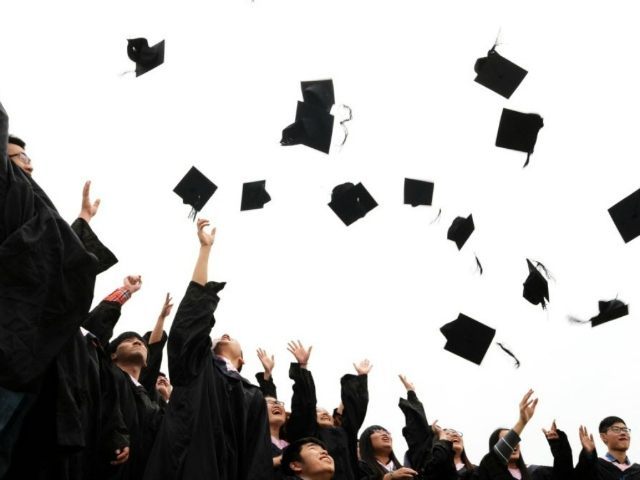Policy expert Betsy McCaughey says the overwhelming academic success of Asian-American students has stoked the outrage of school officials and non-Asian parents across the nation.
Their academic success is nurtured by parents who have provided close supervision and instilled a rigorous work ethic, so Asian-American students have consistently outperformed white, black, and Hispanic students, McCaughey says in a New York Post column. But that’s a problem for various education-sector people who to blame high-stakes testing for the stalled test-scores among non-Asian students.
She writes:
For the first time in 25 years, US scores on the main test for elementary and middle school education fell. And SAT scores for college-bound students dropped significantly.
Could changes in these tests be to blame? That convenient excuse was torpedoed by the stellar performances of Asian-American students. Even though many come from poor or immigrant families, they outscore all other students by large margins on both tests, and their lead keeps widening.
McCaughey says the discrepancy between Asian-American students and others is not due to IQ, but parenting.
But parents of other students are growing increasingly resentful, much like the school officials who are required by federal mandates to close the “achievement gap” and bring minority students up to the level of whites and Asians.
She cites a study by sociologists at City University of New York and the University of Michigan that found parental oversight allowed Asian-American students to outperform others.
In the increasingly progressive land of American education, however, parental control, choice, and supervision are being gradually eliminated as the government has taken over as the omnipotent “parent-figure,” providing not only education in reading and math, but now after-school daycare, sex education, healthcare, and even breakfast, lunch, and dinner.
In West-Windsor-Plainsboro Regional School District in New Jersey, McCaughey writes, the school district is 65 percent Asian and regularly produces seniors with perfect SAT scores, admissions to top-level universities and the highest level of achievement in international competitions.
“But many non-Asian parents are up in arms, complaining there’s too much pressure and their kids can’t compete,” she observes. “In response, this fall Superintendent David Aderhold apologized that school had become a ‘perpetual achievement machine.’ Heaven forbid!”
Subsequently, Aderhold eliminated accelerated math courses for fourth and fifth grades, which were 90 percent Asian, and cancelled exams in high school, switching instead to a “holistic” approach—a euphemism that McCaughey says is the same one used by Harvard to limit the number of Asians accepted to the school.
In New York City as well, Mayor Bill de Blasio has joined with the NAACP in decreasing the role of the competitive exam in admissions to the city’s selective high schools, favoring, instead, the “holistic” approach.
Proof of the determination to suppress the advancement of Asian-American students is examined by education writer Ron Unz who asserts an Asian quota system exists at Harvard, Yale, and other Ivy League schools. He writes:
Over the last twenty years, America’s population of college-age Asians has roughly doubled and Asian academic achievement has reached new heights, but there has been no increase whatsoever in Asian enrollment in those elite universities and indeed substantial declines at Harvard and several other Ivies. Meanwhile, other top colleges such as Caltech that admit students based on a strictly meritocratic and objective standard have seen Asian numbers increase fully in line with the growth of the Asian population.
Unz continues that the admission process for Ivy League schools is completely non-transparent and subjective, based more on favoritism and “even outright corruption.”
“In recent years, Asian enrollments at all the Ivies have converged to a very narrow range and remained relatively constant from year to year, a remarkably suspicious result that seems strongly suggestive of an implicit Asian Quota,” he says. “Indeed, the statistical evidence for a present-day Asian Quota is arguably stronger than that for the notorious Jewish Quota of the Ivies during the 1920s and 1930s, the existence of which was widely denied at the time by university administrators but is now universally accepted.”
In fact, the Wall Street Journal also referred to Asian-American students as “the new Jews of Harvard Admissions.”
Unz says Asian elected officials and even Asian-American activists and advocacy groups have kept silent on the existence of Asian Quotas at Ivy League schools, since many of them are affiliated with these schools themselves.
“Regularly denouncing the perceived misdeeds of ‘white supremacists,’ rightwingers, or even merely Republicans is an easy position to take given that those groups possess negligible influence within the academic community,” he observes. “But Harvard University and its peers dominate higher education like a colossus, and leveling criticism against such targets is hardly conducive to academic career advancement.”

COMMENTS
Please let us know if you're having issues with commenting.